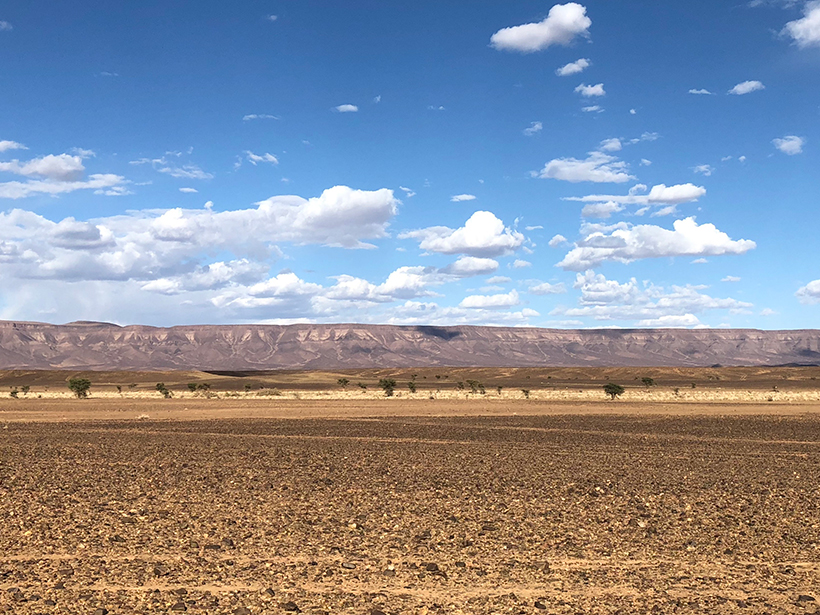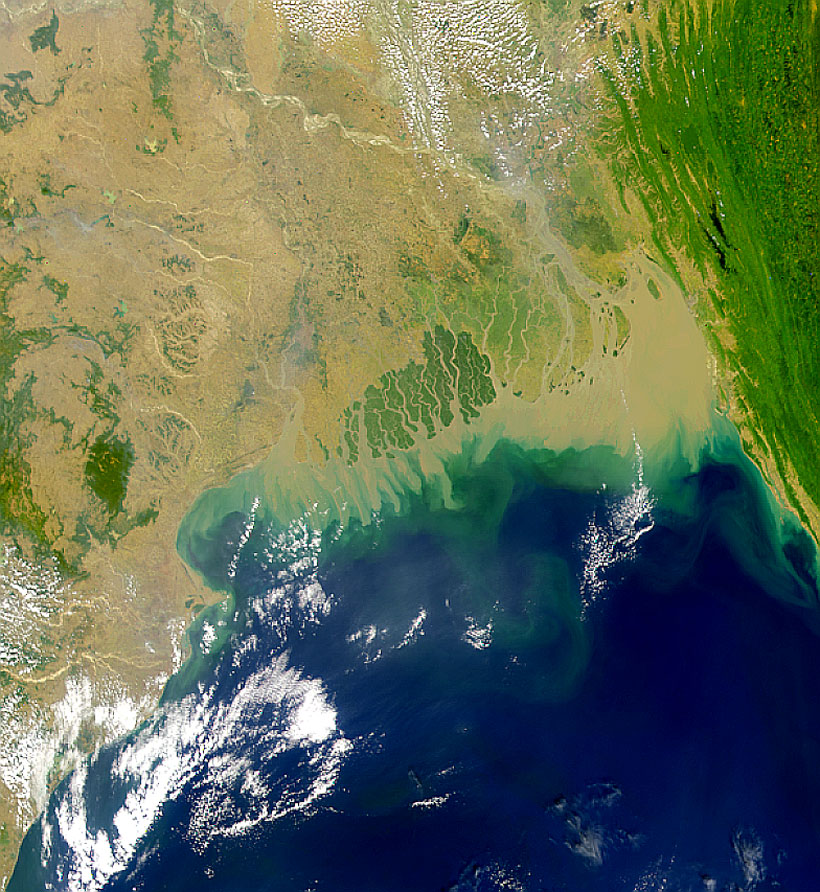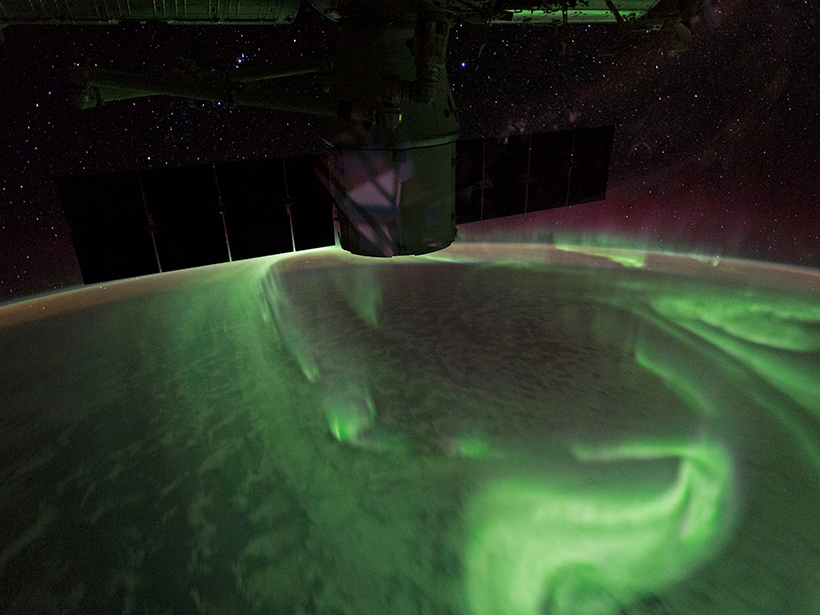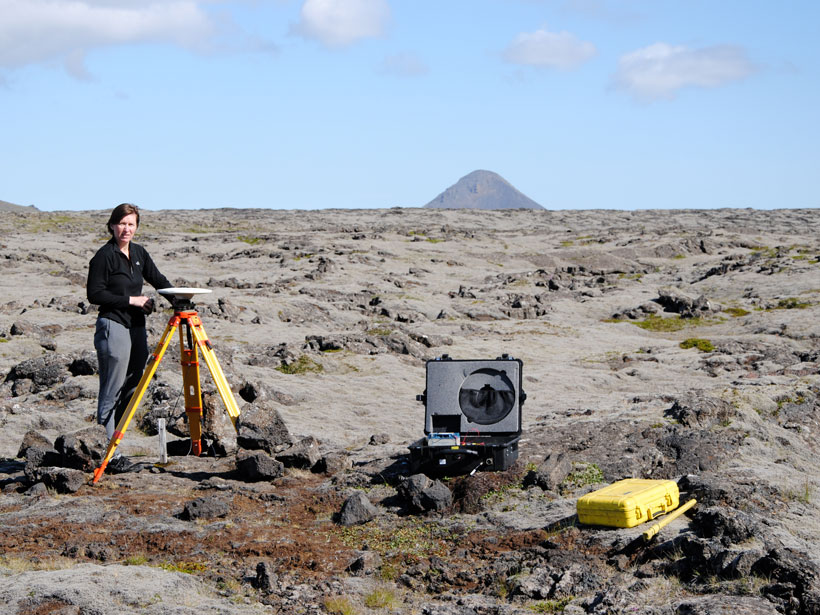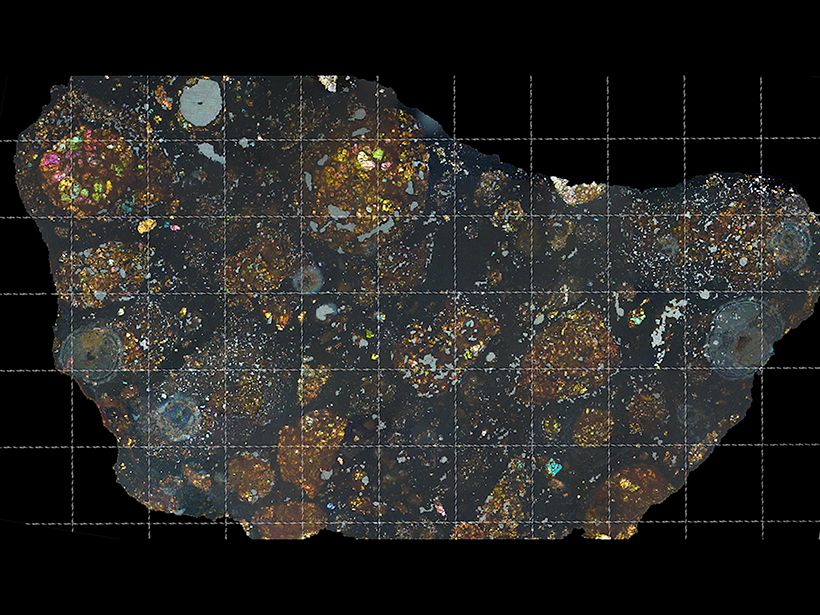The first movie of Jupiter’s infrared aurora gives scientists a new look at the Jovian magnetic field.
CC BY-NC-ND 2019
Study of Alaskan Landslide Could Improve Tsunami Modeling
A rare submarine landslide provides researchers with a reference point for modeling the biggest tsunamis.
Earth’s Eccentric Orbit Helped Preserve Rare Soft-Tissue Fossils
Cyclical changes in Earth’s orbit helped to preserve rare fossils in Morocco.
The Search for the Severed Head of the Himalayas
To unearth the very first sediments to erode from the Himalayas, a team of scientists drilled beneath the Bay of Bengal.
Southern Hemisphere Sediments Show Surprising Pliocene Cyclicity
New, high-resolution paleoclimate reconstructions with 100,000-year rhythms may offer insights into how Earth’s climate system operated during a time when the planet was warmer than it is today.
Bringing Clarity to What Drives Auroras
A new classification scheme helps researchers distinguish what accelerates the electrons that create auroras.
A New Way of Visualizing Iceland’s Crustal Deformation
A novel method of calculating strain rates from GPS data shows the South Iceland Seismic Zone is experiencing rapid deformation, including inflation near the island’s most active volcano.
Meteorite’s Hidden Treasure: A Comet
A fragment of a comet found hidden inside a meteorite is offering new insights into the dynamics of our young solar system.
All Types of Large Earthquakes Produce Prompt Gravity Signals
New observations of recently discovered gravity perturbations that precede seismic waves have the potential to improve earthquake early-warning systems in California and other tectonic settings.
National Volcano Warning System Gains Steam
It took more than a decade, but a bill that funds U.S. volcano monitoring efforts and establishes a single system became law on 12 March.



